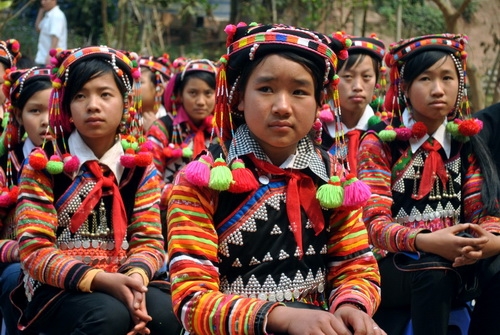Incentive policies for disadvantaged areas
(VOV) - The Party and State consistently pay special attention to protecting the social welfare of ethnic minority people in economically disadvantaged areas.
Reporter: Since 2011, poverty reduction programmes and policies have involved the entire political system and wider society, remarkably reducing the number of poor households. But limitations remain. What is your assessment of this work?
Mr Tam: Despite economic growth lower than set targets, poverty reduction programmes have broadened poor people’s access to social welfare, healthcare services, education, safe water, environmental hygiene, and cultural activities.
The wealth gap between different regions is still unsustainable, even widening in regards to northern mountainous provinces and the Central Highlands.
 |
The proportion of residents living below the poverty line is above 50 percent— as high as 60–70 percent—in some areas.
Budget and tax revenue collection difficulties have resulted in limited investment capital and failures to achieve the goals of national target programmes.
The 2011–2013 poverty reduction programme’s VND12,948 billion mobilised capital is equivalent to only 45 percent of total State budget expenses.
State Bank of Vietnam (SBV) Governor Nguyen Van Binh has said the VND180 trillion loan package is still very little to help extend loan access to households that hover around the poverty line.
Reporter: Redundancies have been reported in the implementation of poverty reduction programmes in especially disadvantaged areas. What should be done to increase the efficiency of these programmes?
Mr Tam: In the context of domestic economic difficulties caused by the global economic downturn, the Vietnamese Government has issued decrees to stimulate sustainable growth, curb inflation, stabilise the macro-economy, and ensure social welfare.
National target programmes, and the third phase of poverty reduction program 135, are focused on investing more in remote mountainous, border, and island areas. This investment is allocated to realising Millennium Development Goals (MDGs) and thus ensure macroeconomic and socio-economic stability.
The Ministry of Labour, Invalids, and Social Affairs (MoLISA) has mobilized more than VND542,000 billion from social capital resources for 16 national target programmes to support disadvantaged areas over 2005–2012. It speaks to the united efforts of society as a whole.
Poverty reduction programmes should be integrated with national target programmes to support production development in especially disadvantaged areas and help the poor enjoy easier access to healthcare services, education and loans.
Reporter: Could you please tell about the preferential investment and vocational training policies encouraging business operations in mountainous areas?
Mr Tam: Rural worker vocational training programmes run for ethnic minority communities in Soc Trang, Cao Bang, and Ha Giang in 2013 showed the proliferation of modern technological labour, production and industrial development advances remains very limited.
In the past, Party and State incentive policies spurred on training more highly skilled workers and encouraged business investment in mountainous and disadvantaged areas.
In addition, the Prime Minister has approved a vocational training project for rural workers until 2020 that focuses on boosting production, ensuring steady employment, and enhancing the role of businesses themselves in providing vocational training and opportunities for rural workers.
Reporter: Thank you very much.

